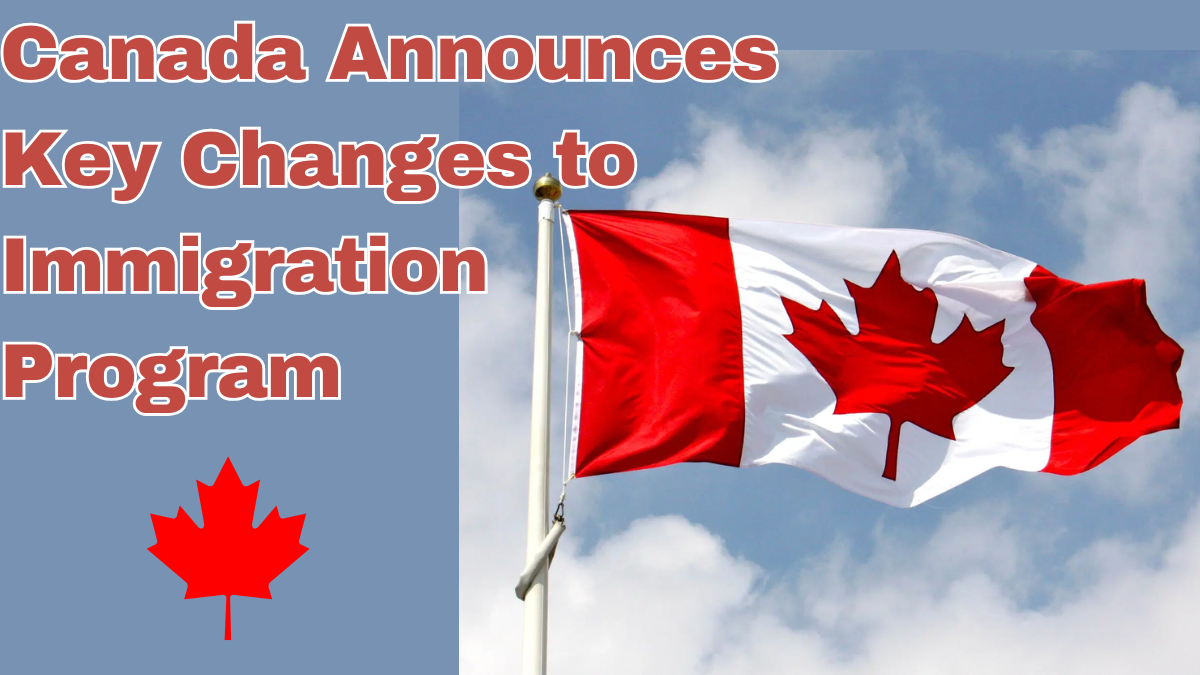Canada has announced significant changes to its immigration system aimed at making it easier for skilled workers, entrepreneurs, and international students to obtain permanent residence. The new measures are designed to address labor shortages, attract talent, and improve the economic integration of immigrants, all while ensuring that Canada remains a welcoming destination for individuals from around the world. Here’s everything you need to know about these major changes and how they will impact foreigners seeking permanent residence in Canada.

Key Changes to Canada’s Immigration System
Increased Pathways for Skilled Workers
In an effort to meet the growing demand for skilled labor, Canada will be introducing more pathways for skilled workers to apply for permanent residence. The new pathways will prioritize individuals with in-demand skills, particularly in industries such as healthcare, technology, construction, and engineering.
Under the new system, individuals with job offers in Canada or those who have work experience in Canada will be able to apply for permanent residence through the Express Entry program or the Provincial Nominee Program (PNP). These two pathways have been streamlined to make the application process faster and more transparent.
Additionally, candidates who have studied or worked in Canada will receive additional points under the Comprehensive Ranking System (CRS), improving their chances of obtaining permanent residence.
New Immigration Pilot Programs for Entrepreneurs and Investors
As part of Canada’s efforts to boost economic growth, the government has launched new pilot programs targeting entrepreneurs and investors. These programs are designed to attract individuals who can contribute to the Canadian economy by starting businesses, creating jobs, and investing in innovative sectors.
Under these new pilot programs, entrepreneurs who can demonstrate a viable business idea and the ability to create jobs for Canadians may be eligible for permanent residence. This will help address labor market gaps in various industries, especially in sectors such as technology, agriculture, and green energy.
International Students to Benefit from Easier Permanent Residence Pathways
Canada has long been a top destination for international students, and the new changes will make it even easier for them to stay after graduation. The new immigration policies will offer a smoother transition from study permits to permanent residency for students who have completed post-secondary education in Canada.
Graduates with Canadian degrees will be eligible for accelerated processing through the Post-Graduation Work Permit Program (PGWPP), and those with Canadian work experience will have an easier time qualifying for permanent residency through Express Entry. Additionally, international students who gain work experience in Canada after graduation will receive additional points under the CRS, enhancing their chances of being invited to apply for permanent residence.
Family Reunification Measures Strengthened
Family reunification remains a cornerstone of Canada’s immigration system, and the new policies will strengthen this by making it easier for Canadian citizens and permanent residents to sponsor their family members for permanent residence.
The new measures will increase the number of family reunification applications accepted annually, and the process will be more efficient, reducing waiting times. Spouses, children, parents, and grandparents will be able to reunite with their loved ones more quickly, promoting stronger family connections and community cohesion.
Greater Focus on Regional Immigration
Recognizing the importance of economic development across the country, Canada is also placing greater emphasis on regional immigration programs. Through the Regional Pilot Program, individuals who are willing to live and work in smaller communities or rural areas will receive additional incentives to apply for permanent residence.
These regions are often facing labor shortages and would benefit from attracting immigrants who can help drive local economies. By targeting immigrants to specific areas, Canada hopes to relieve pressure on major cities like Toronto and Vancouver and promote population growth and economic development in underpopulated areas.
Benefits of These Changes
-
Addressing Labor Shortages: With Canada facing labor shortages in several key sectors, these changes are designed to attract skilled workers who can help meet demand, especially in healthcare, technology, and construction. By simplifying the process for foreign workers and entrepreneurs, Canada is hoping to fill gaps in the workforce and sustain economic growth.
-
Economic Growth: Immigrants who bring business acumen, entrepreneurial spirit, and investment are expected to contribute significantly to Canada’s economy. The new entrepreneur and investor programs are poised to generate more jobs, attract international investments, and foster innovation in the Canadian economy.
-
Easier Transitions for International Students: The new changes will make it easier for international students to remain in Canada after their studies, benefiting both students and employers who wish to retain talented graduates. This will help meet labor market needs while providing students with a clear pathway to permanent residence.
-
Stronger Communities: The family reunification measures will strengthen Canadian communities by allowing families to come together, promoting social stability and enhancing the quality of life for immigrants and Canadian citizens alike.
-
Balanced Immigration Across Canada: By encouraging immigration to smaller communities and rural areas, the new policies will help to reduce congestion in major cities while stimulating economic growth in other parts of the country. This is a strategic move to promote more balanced population distribution and regional development.
Potential Challenges
While the changes to Canada’s immigration program offer many advantages, there are also some potential challenges:
-
Overwhelming Demand: The increased number of pathways for skilled workers and entrepreneurs may lead to overwhelming demand for permanent residence applications. Although the government is working to streamline processes, applicants may still face long waiting periods in some cases.
-
Regional Disparities: While regional immigration programs offer new opportunities for rural and smaller communities, there may be challenges in attracting immigrants to these areas, especially if the job market or living conditions are less appealing compared to larger cities.
-
Integration and Support: The influx of skilled workers, entrepreneurs, and international students may strain Canada’s existing support services, such as housing, healthcare, and social integration programs. Proper planning will be necessary to ensure that these new immigrants can successfully integrate into Canadian society.
Conclusion
The new changes to Canada’s immigration system represent a significant shift in how the country will attract skilled workers, entrepreneurs, and international students. By expanding pathways to permanent residence, simplifying processes, and promoting regional immigration, Canada aims to address labor shortages, drive economic growth, and strengthen communities. While the changes offer many benefits, challenges remain, particularly around integration and support services. As Canada adapts to its evolving immigration needs, these changes will shape the future of the country’s immigration landscape for years to come.
Frequently Asked Questions
Who qualifies for the new pathways for skilled workers?
Skilled workers with relevant work experience, education, and job offers in Canada may qualify for the new pathways under Express Entry and the Provincial Nominee Program (PNP). The eligibility criteria vary depending on the specific pathway.
How can entrepreneurs apply for permanent residence in Canada?
Entrepreneurs who plan to start businesses in Canada and meet specific criteria can apply through the new pilot programs. These programs focus on attracting individuals with viable business ideas that can contribute to the economy.
How do international students benefit from the new changes?
International students who complete post-secondary education in Canada can transition more easily from study permits to permanent residency. Work experience gained in Canada will improve their chances of qualifying for permanent residence through Express Entry.
What is the Regional Pilot Program?
The Regional Pilot Program is designed to encourage immigrants to settle in smaller communities and rural areas. Applicants who agree to live and work in these regions may receive additional points toward their permanent residence application.
Will family members be able to reunite more quickly?
Yes, the new policies will prioritize family reunification and increase the number of applications accepted annually. The process for sponsoring family members, including spouses, children, and parents, will be more efficient, reducing waiting times.
Pari is a passionate writer known for captivating stories that blend imagination and reality. Inspired by travel, history, and everyday moments, Pari crafts narratives that resonate deeply with readers.




